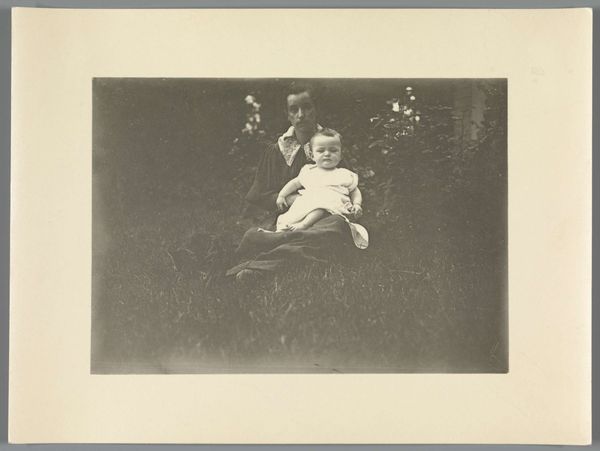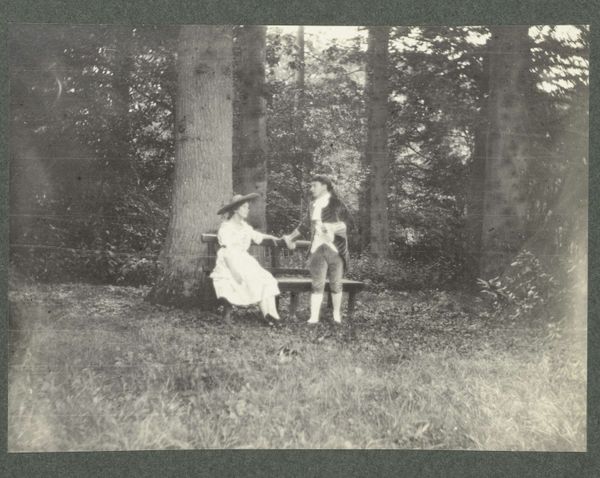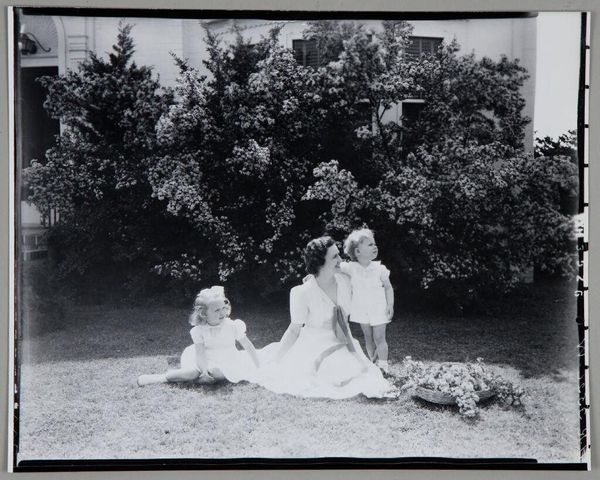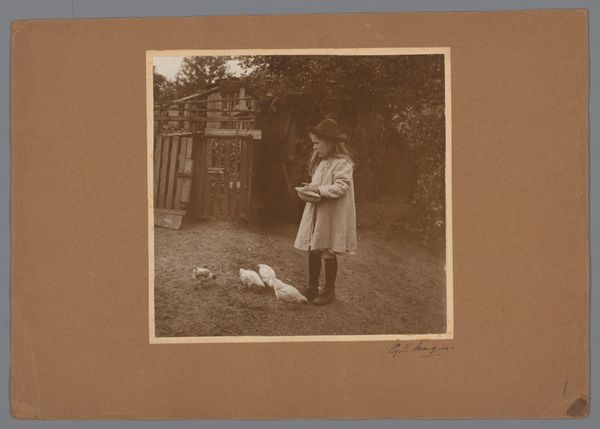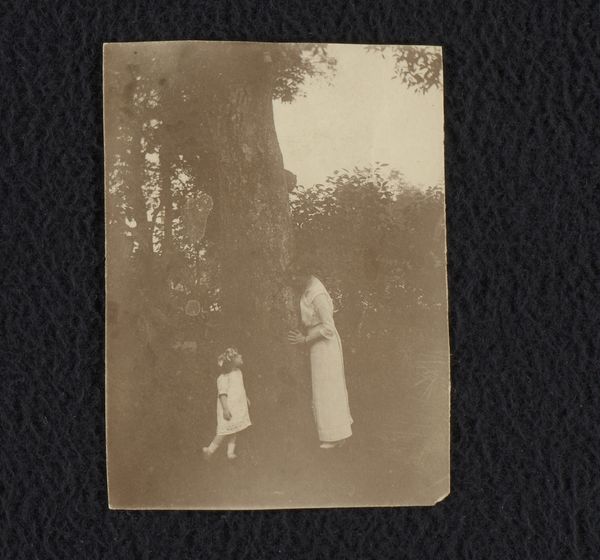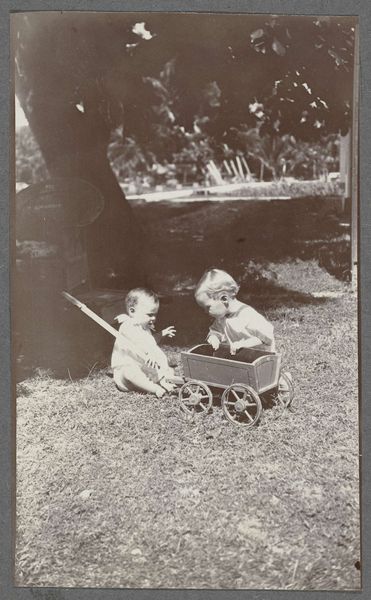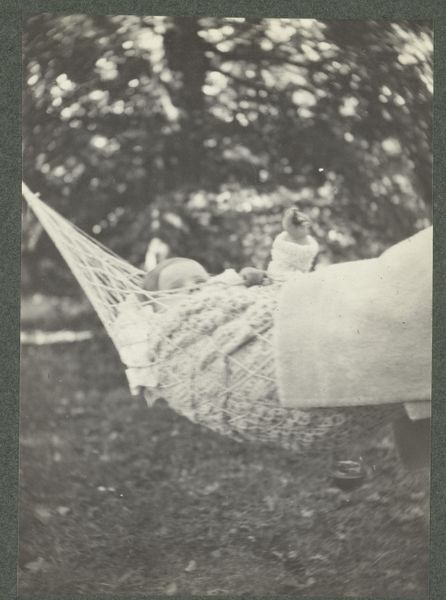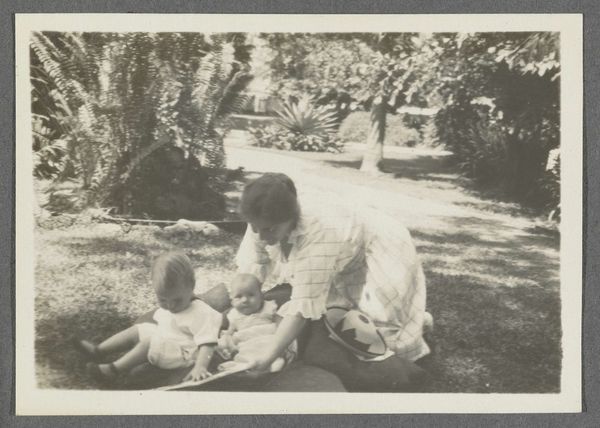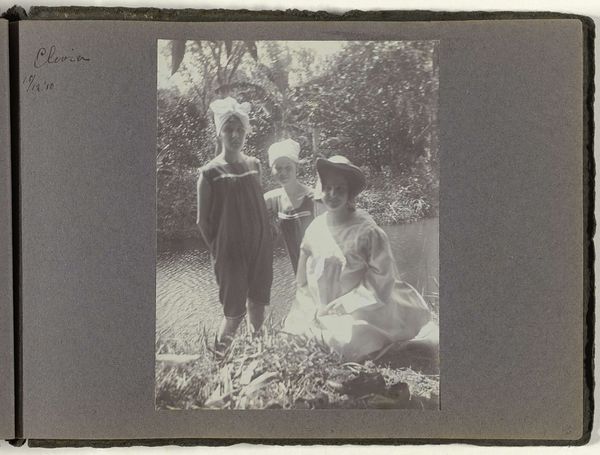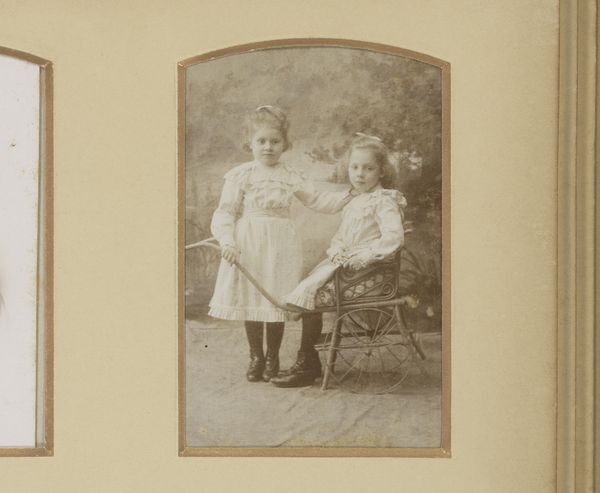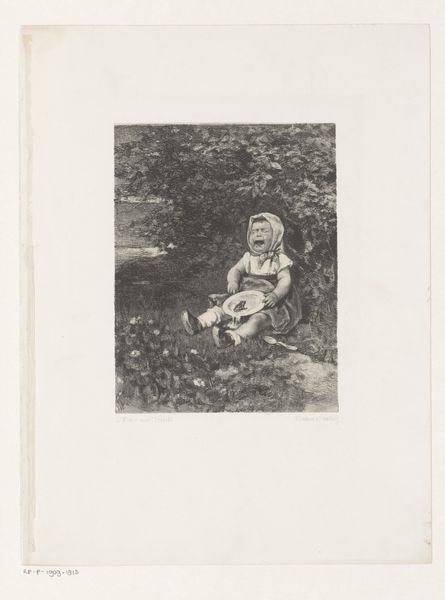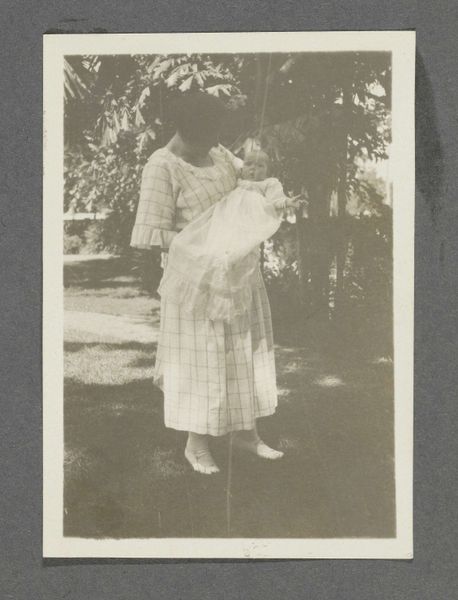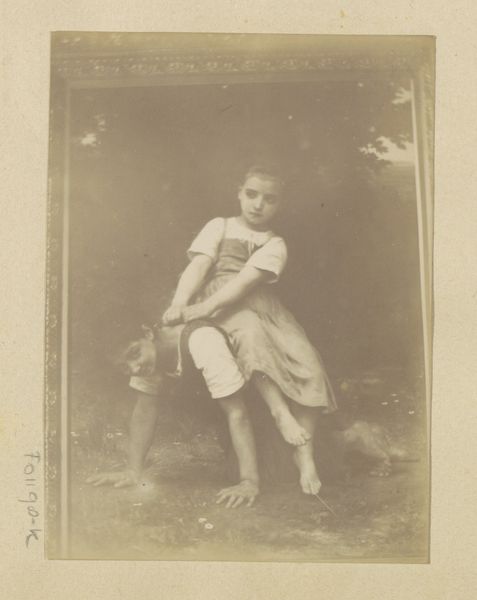
Moeder en dochter zitten op het gras, Landgoed De Paauw c. 1913
0:00
0:00
Dimensions: height 73 mm, width 98 mm, height 198 mm, width 263 mm
Copyright: Rijks Museum: Open Domain
Curator: Here we have Geldolph Adriaan Kessler’s "Moeder en dochter zitten op het gras, Landgoed De Paauw," dating from around 1913. It's currently held in the Rijksmuseum collection. Editor: It has this very somber feel. Almost like a lost memory, wouldn't you say? The limited tonal range gives it a haunting, timeless quality. Curator: It’s definitely evocative. Kessler was part of a movement pushing photography toward art—embracing ‘plein-air’ techniques. These outdoor portraits showcase a deliberate blurring of lines, literally and figuratively, between traditional landscape painting and portraiture within the burgeoning market for photography. Editor: Interesting. The formal elements create a rather strong composition though, even with that blurriness. Look at the way the large dark tree in the background creates an upper frame, grounding the subjects below. The contrast emphasizes their smallness within the broader landscape. Curator: Absolutely, and that composition highlights the changing role of women and children within that societal landscape. We see an emphasis on leisure and the performance of domesticity within the upper classes of the early 20th century, a construction facilitated by technological advancements in camera production and photographic printing. Editor: So, do you see it commenting on labor, leisure, class? To me, it reads more like an exploration of light and form through a specific photographic lens, which emphasizes shape and spatial relationships over clarity of detail. The subjects become textural components, like brushstrokes, within the larger scene. Curator: But consider the materials themselves. Early photographic processes involved significant labor—from preparing the chemicals to developing the print. Kessler’s choices, made possible through advancements in industrial chemistry, point toward wider questions around artistic value. Editor: That's interesting food for thought. All these layers of artistic process, family identity and also nascent capitalism make for a wonderful discussion. Curator: Indeed, this single frame holds many stories and a microcosm of shifts in social history.
Comments
No comments
Be the first to comment and join the conversation on the ultimate creative platform.
